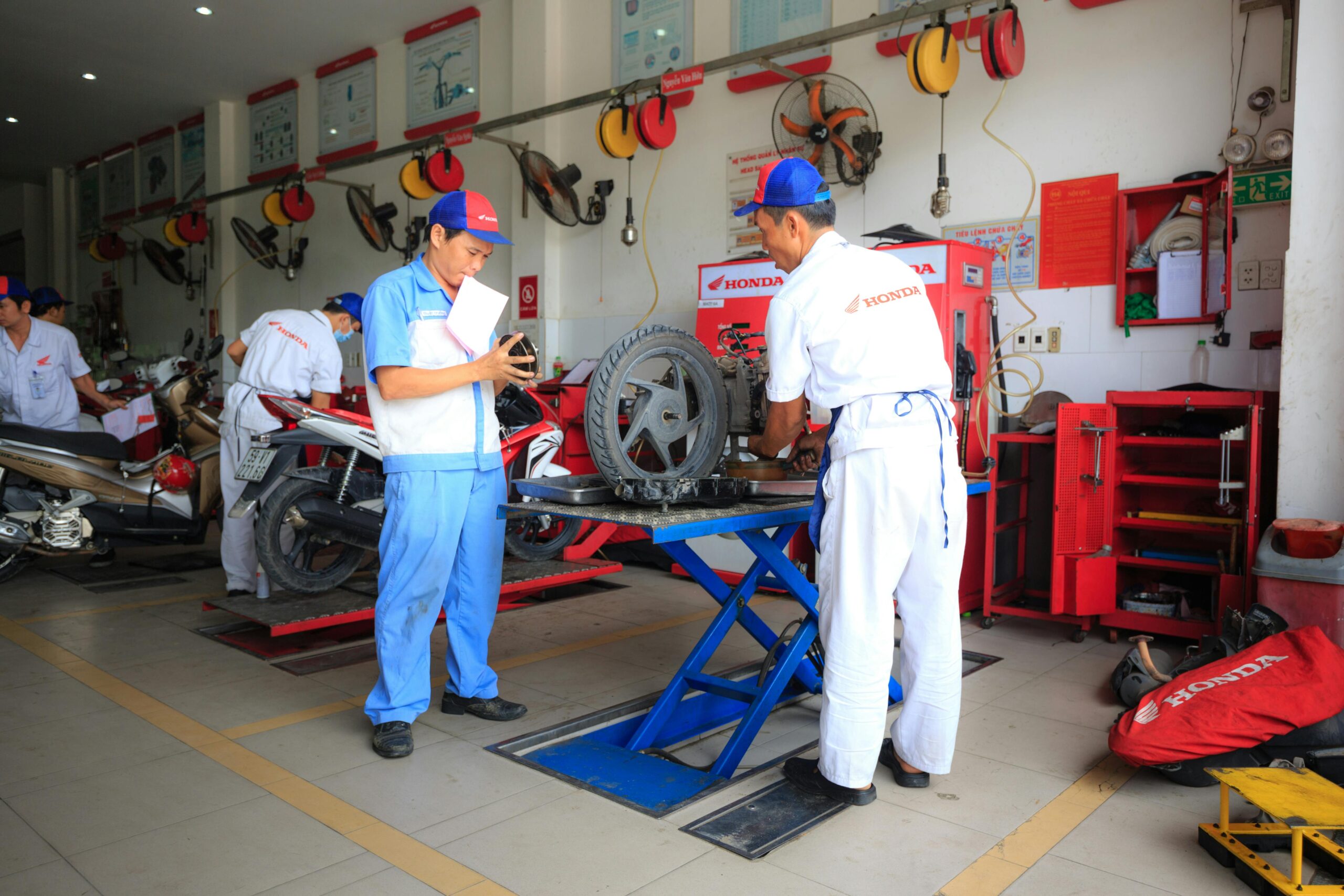Motorcycle repair shops are continuously seeking ways to improve their efficiency and accuracy in estimating repair costs. One of the most effective tools for achieving this is Motorcycle Repair Estimating Software. This software simplifies the repair estimating process, reduces errors, and speeds up the workflow. However, successfully implementing this software requires careful planning and execution. In this blog, we will explore the best practices for implementing Motorcycle Repair Estimating Software to ensure that your shop can take full advantage of its capabilities.
1. Understand Your Needs and Requirements
Before you start implementing Motorcycle Repair Estimating Software, it’s essential to understand your shop’s specific needs. Every repair shop is different, with unique processes, services, and customer demands. Take the time to evaluate your existing workflows and determine where the software can make the most impact. Do you need it for estimating labor costs, parts, or both? Will it need to integrate with other software, such as inventory management or invoicing systems?
By identifying your requirements, you ensure that you select the right Motorcycle Repair Estimating Software that aligns with your business goals. This early step will also help you avoid the frustration of dealing with software that doesn’t meet your shop’s needs.
2. Choose the Right Motorcycle Repair Estimating Software
Choosing the right software is critical. Not all estimating software is created equal, and some may have features that are better suited for your repair shop than others. When researching options, consider the following factors:
- Ease of Use: The software should be user-friendly, especially for shop technicians and service managers who will be using it daily.
- Customization: Can the software be tailored to your specific repair processes? Look for features that allow customization of labor rates, part prices, and other variables.
- Integration: Ensure the software can integrate with other tools you use, such as point-of-sale systems, inventory management, or accounting software.
- Support and Training: Opt for software that comes with comprehensive support and training resources. A solid support system can help resolve issues quickly and reduce downtime.
By taking the time to choose the right software, you’re setting the stage for a smooth implementation process.
3. Prepare Your Team for Change
Implementing Motorcycle Repair Estimating Software will likely require changes in how your team works. To ensure a successful transition, it’s important to prepare your team for the change. Start by communicating the benefits of the new software and how it will improve their daily tasks. This can help generate excitement and minimize resistance.
Provide training for all staff members who will be using the software. Training should be hands-on and relevant to each person’s role. Technicians may need to focus on entering repair details, while service managers may need to learn how to generate estimates and review reports. Be sure to allow enough time for everyone to become comfortable with the new system.
4. Implement a Gradual Rollout
Instead of implementing Motorcycle Repair Estimating Software all at once, consider a gradual rollout. Begin by testing the software with a small group of users, such as a few technicians or managers. This will give you a chance to address any issues or concerns before the software is used across the entire shop.
A gradual rollout allows your team to learn and adapt at a comfortable pace. If any issues arise, they can be dealt with on a smaller scale, which prevents larger disruptions to the shop’s daily operations.
5. Integrate with Existing Systems
One of the most important best practices for implementing Motorcycle Repair Estimating Software is ensuring it integrates smoothly with your existing systems. If your shop already uses inventory management, accounting software, or a point-of-sale system, it’s crucial that the new estimating software can work with these tools.
Integration ensures that the software pulls accurate data from other systems, such as inventory levels, labor rates, and customer information. This helps streamline the repair estimating process and reduces the chances of errors. It also makes it easier to generate accurate invoices and manage customer accounts.
6. Regularly Update and Maintain the Software
Software updates are essential for keeping your Motorcycle Repair Estimating Software running smoothly. Manufacturers often release updates that fix bugs, improve security, and add new features. Make sure to regularly check for updates and install them as soon as they are available.
In addition to updates, maintenance is equally important. This includes checking for any data inconsistencies, ensuring the software remains compatible with other systems, and conducting regular backups. Regular maintenance will help keep the software functioning optimally and prevent costly downtime.
7. Track Performance and Gather Feedback
Once the Motorcycle Repair Estimating Software is fully implemented, it’s important to track its performance. Keep an eye on how it affects your shop’s efficiency, accuracy, and customer satisfaction. Are estimates being generated faster? Are customers receiving more accurate repair quotes?
Gather feedback from your team to identify any areas where the software can be improved. Encourage open communication and make it clear that their input is valued. Feedback will help you continuously improve the system and ensure it aligns with your shop’s needs.
8. Monitor and Adjust Pricing as Needed
Pricing is a critical component of motorcycle repair estimating. One of the main functions of Motorcycle Repair Estimating Software is to generate accurate cost estimates for repairs. Over time, labor rates, parts prices, and other factors may change. It’s important to monitor and adjust your pricing regularly to ensure that estimates remain accurate and competitive.
The software should allow you to make adjustments quickly and easily. This ensures that you’re always offering customers fair and transparent pricing while protecting your profit margins.
9. Leverage Reporting and Analytics
Most Motorcycle Repair Estimating Software comes with built-in reporting and analytics features. These tools can help you track key performance indicators (KPIs) such as the number of estimates generated, average repair costs, and customer satisfaction.
By leveraging these reports, you can gain valuable insights into your shop’s operations. For example, if you notice that a particular type of repair consistently has higher-than-expected costs, you can investigate further to identify potential inefficiencies. Data-driven insights can help you optimize your processes and make more informed decisions.
10. Ensure Customer Communication Is Clear
One of the benefits of Motorcycle Repair Estimating Software is the ability to generate clear, professional estimates for customers. Be sure that your team is using the software to create estimates that are easy to understand. Clear communication is essential to avoid misunderstandings about repair costs and expectations.
When you provide customers with accurate, transparent estimates, it builds trust and improves their experience with your shop. In addition, consider sending digital estimates directly to customers via email or text, making it easier for them to review and approve.
Conclusion
Implementing Motorcycle Repair Estimating Software is a smart decision for motorcycle repair shops looking to streamline their operations and enhance customer satisfaction. By following these best practices, you can ensure a smooth implementation process that maximizes the software’s potential. Start by understanding your needs, choosing the right software, and preparing your team for change. Gradually roll out the software, integrate it with existing systems, and regularly update it to keep things running smoothly.
Tracking performance, adjusting pricing, and leveraging reporting features will help you continually improve your processes. Most importantly, always prioritize clear communication with your customers to foster trust and ensure their satisfaction. By taking these steps, you’ll be well on your way to successfully implementing Motorcycle Repair Estimating Software and reaping the benefits of increased efficiency and accuracy in your shop.





